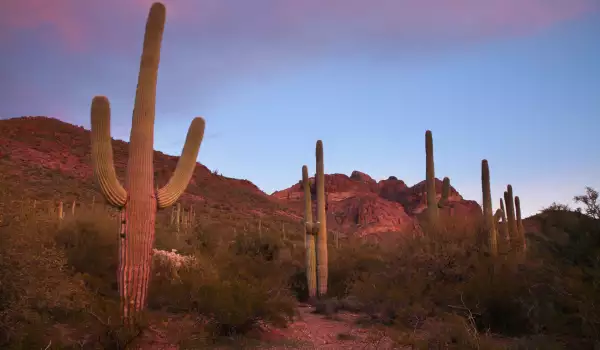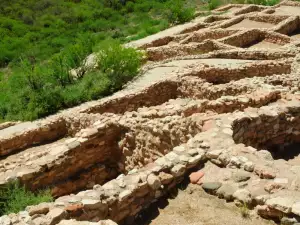Organ Pipe Cactus National Monument

Organ Pipe Cactus National Monument is in southern Arizona, bordering the Mexican state of Sonora.
This is the only place in the United States, where a rare species Organ Pipe cactus grows in the wild. Besides this type of cactus, the area has many other types of cacti and other plants typical of the desert, which are common in Yuma Desert and Sonoran Desert.
The land that extends Organ Pipe Cactus National Monument, was donated by Arizona to the federal government during Prohibition, as it was clear that time will make northeast smuggling alcohol easier to import from Mexico. This land was declared a national monument in 1937.
CR tasks near the eastern part of the national monument is the town Lukeville, which is in Arizona and the northern entrance of the park is located near the town of Why, which is also in Arizona. Visitor Centre of the Park is named after the ranger Kris Eggle, who was shot by a Mexican smuggler during the operation of US Border Patrol.
Organ Pipe Cactus National Monument has received its name because the specific kind of cactus, whose Latin name is Marshallocereus thurberi. Cactus, which reaches seven feet tall, resembles a giant crystal, and also a pipe organ. Throughout the Sonoran desert are scattered Piles of inaccessible areas where high cacti grow side by side.

The view is very beautiful and attracts a large amount of photographers from around the world who travel there to photograph the unique plants. Huge amount of tourists arrive each year in the wilderness to enjoy the magnificent view of the enormous cacti. The park has twenty six types of different species of cacti. Among them is the giant saguaro.
Despite the desert climate of the territory of the monument many different types of animals inhabit it. They have adapted to extreme temperatures and constant sunshine, and to rare rainfall that characterizes this region. Since the park is a place that is guarded, here species are not endangered. The ecosystem is not destroyed by human intervention and is almost in the form in which it was many years back.
In 1976, recognizing the importance and uniqueness of the monument, the United Nations declared the monument an international biosphere reserve.
Among the animals that tourists might encounter along the way are mountain lions, coyote, white-tailed deer, rabbits, different types of rats, including the kangaroo rat, Proboscis bat, fish quitobaquito, different types of snakes, including rattlesnakes, other reptiles and a large amount of birds .
There are so many bats that each year in the monument collect about twenty thousand females who are pregnant and have come here to raise their young. They feed mainly on nectar and fruit of the cactus. They are responsible for pollination of different types of cacti in the desert.















